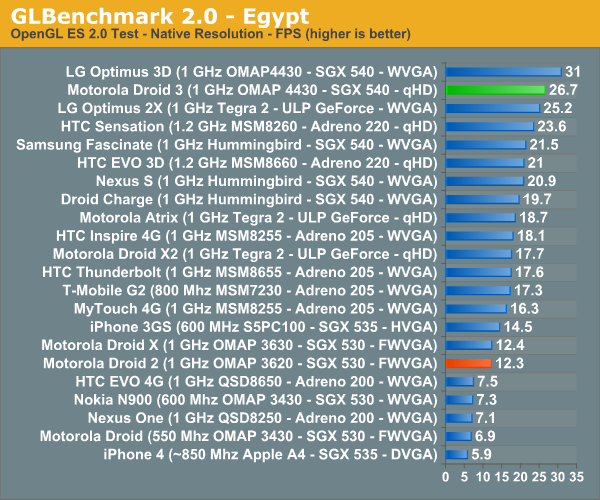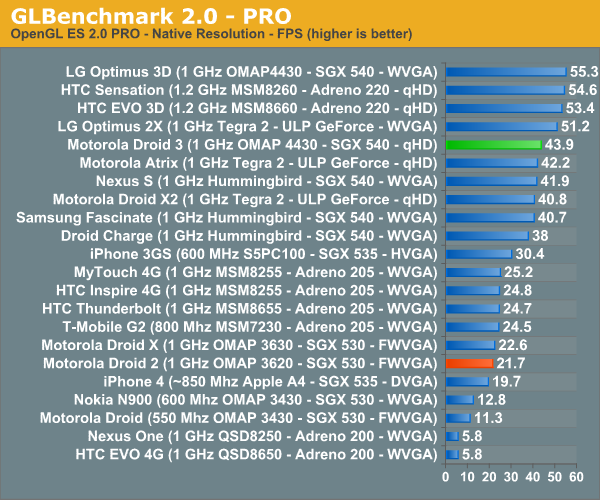Healthy skepticism when it comes to benchmarks is always appropriate, but in this case, all signs point to the dual core Snapdragon not being as competitive as some of its brethren. Generally, if you want that kind of information, you need to head to
AnandTech (and
here... and the
meaty part here), where they are very serious about the art of performance testing.
The number of cores and the processor clockspeed are not the only indicators of performance, and the CPU architecture plays a large role in the computing efficiency of the processor. The nVidia Tegra 2, Samsung Exynos, Apple A5 (?), and Texas Instruments OMAP 4 dual core processors use a more recent and improved ARM Cortex A9 architecture. The Qualcomm Snapdragon, while not quite using the prior Cortex A8 architecture, is using something that generationally falls somewhere between the A8 and A9.
In short, even though the Tegra 2 runs at 1Ghz, it is not a huge surprise that it is either competitive with or somewhat exceeds a Snapdragon 1.2 Ghz SoC. There are questions as to preproduction units, optimization, and increase dual core software optimization, but we shouldn't delude ourselves too much as to what potential benefits they may bring.
The results are admittedly somewhat disappointing and Qualcomm needs to step up their SoC game a bit, though this isn't necessarily the first time us Evo owners have been in this position. Even upon release, the original Snapdragon was recognized to have terrible 3D performance (sigh Adreno 200) and the PowerVR SGX GPU in my year old Palm Pre was a stronger performer. Subsequent releases with the Samsung Hummingbird processor only further served to show how much we were lacking in the GPU department.
That said, I think the conclusion is that even when the Evo 3D launches, we will definitely not have the fastest horse in the stable, for the people for which it matters. However, the overall performance increases from the original Evo should be quite significant, and that will hopefully be enough for all of us.
(Personally, I'm keeping an eye out for comparisons with the current single core Hummingbird -- that thing has continued to impress me and I hope the Snapdragon gains over it are more than marginal).
Asynchronous dual cores isn't a performance issue, though it is notably a power consumption one. With the Tegra 2, both cores are running at the same clock, so if you need the performance, it's full blast. However, with the new Snapdragon and async cores, the amount of power is better tailored to each core's individual load. The power consumption
should be better on the Snapdragon (though the fab processon the snapdragon is 45nm versus 40nm on the Tegra...)
...OTG is pretty cool, but it's not a performance issue, is it?


 It's just that many do forget about the extra 35% pixels the 3vo has to render when comparing benchmarks.[/QUOTE]
It's just that many do forget about the extra 35% pixels the 3vo has to render when comparing benchmarks.[/QUOTE]


